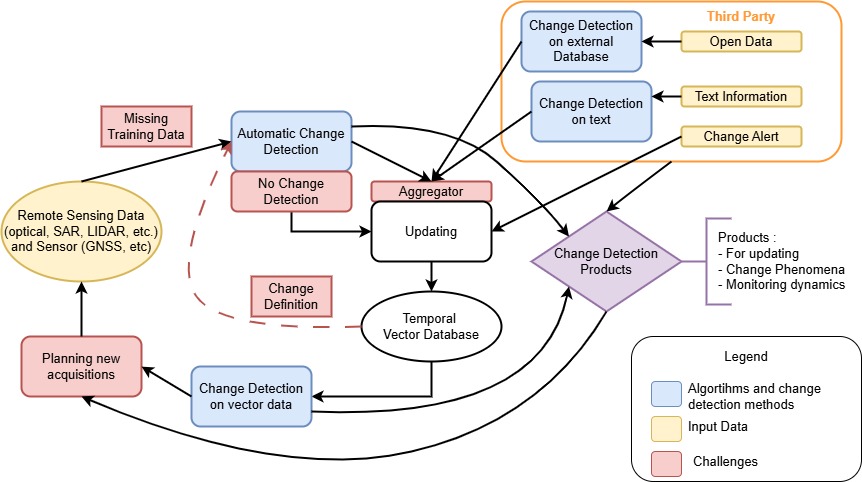Operational Change Detection for Geographical Information: Overview and Challenges
Published in preprint, 2025
Recommended citation: Gonthier N. (2025). "Operational Change Detection for Geographical Information: Overview and Challenges" preprint. https://arxiv.org/pdf/2503.14109
Nicolas Gonthier
Please do not hesitate to contact me if you have any comments on this work in progress to improve it.
Abstract
Rapid evolution of territories due to climate change and human impact requires prompt and effective updates to geospatial databases maintained by the National Mapping Agency. This paper presents a comprehensive overview of change detection methods tailored for the operational updating of large-scale geographic databases. This review first outlines the fundamental definition of change, emphasizing its multifaceted nature, from temporal to semantic characterization. It categorizes automatic change detection methods into four main families: rule-based, statistical, machine learning, and simulation methods. The strengths, limitations, and applicability of every family are discussed in the context of various input data. Then, key applications for National Mapping Agencies are identified, particularly the optimization of geospatial database updating, change-based phenomena, and dynamics monitoring. Finally, the paper highlights the current challenges for leveraging change detection such as the variability of change definition, the missing of relevant large-scale datasets, the diversity of input data, the unstudied no-change detection, the human in the loop integration and the operational constraints. The discussion underscores the necessity for ongoing innovation in change detection techniques to address the future needs of geographic information systems for national mapping agencies.
Keywords
- Change Detection
- Review
- National Mapping Agency
- Earth Observation
- Geospatial Database
